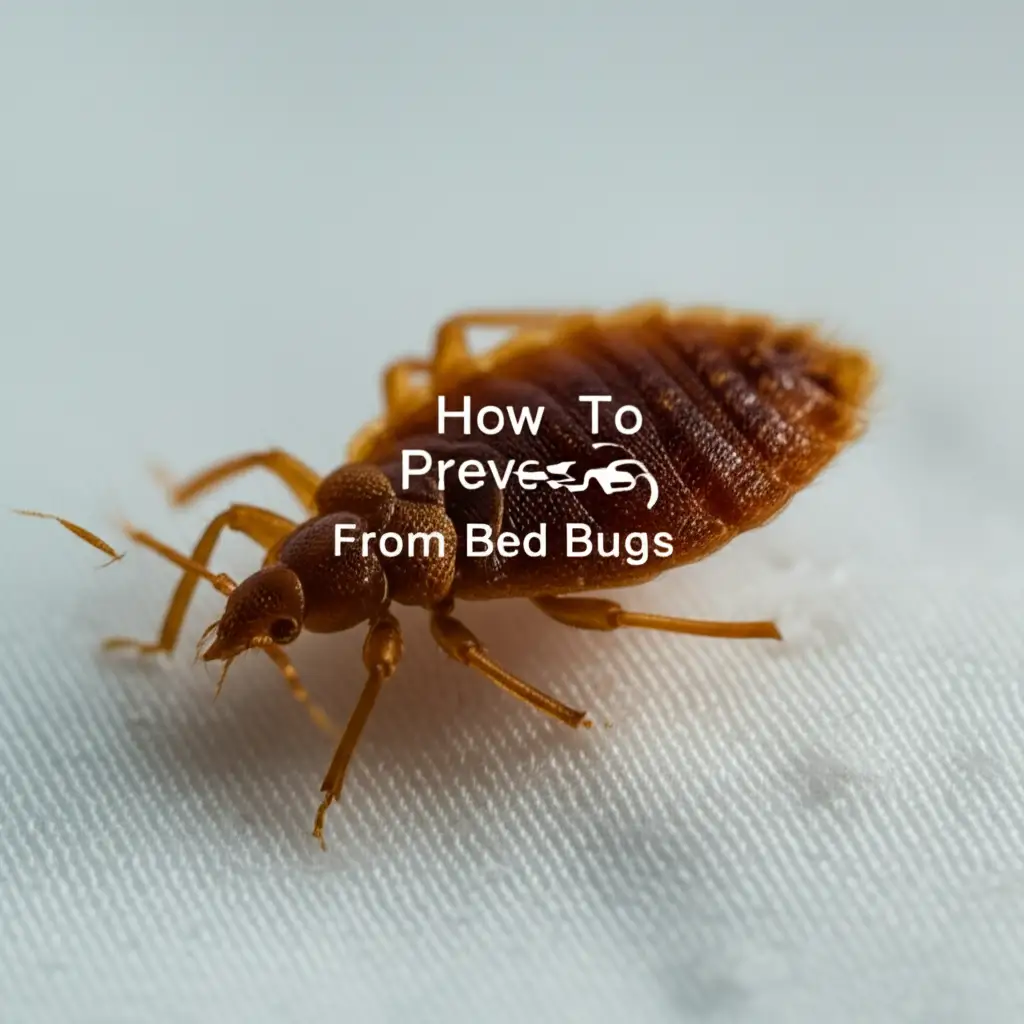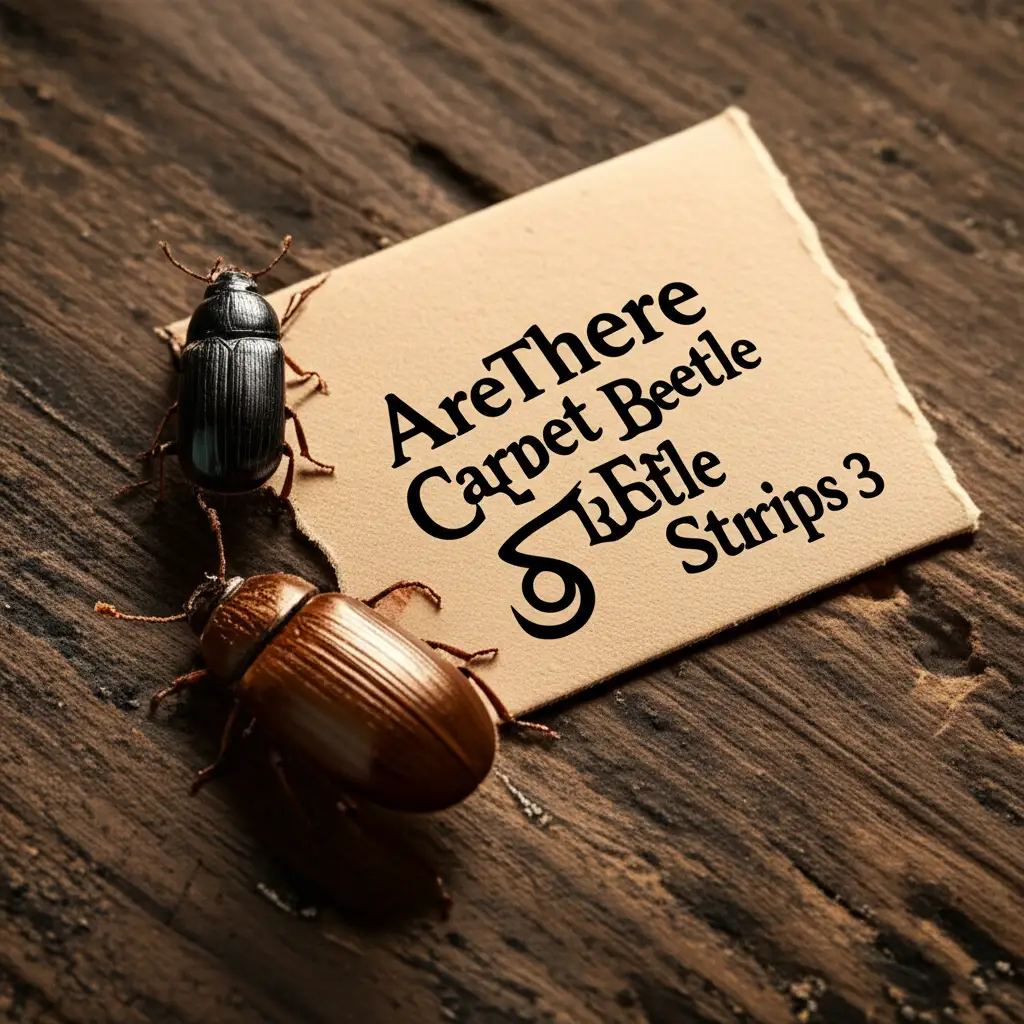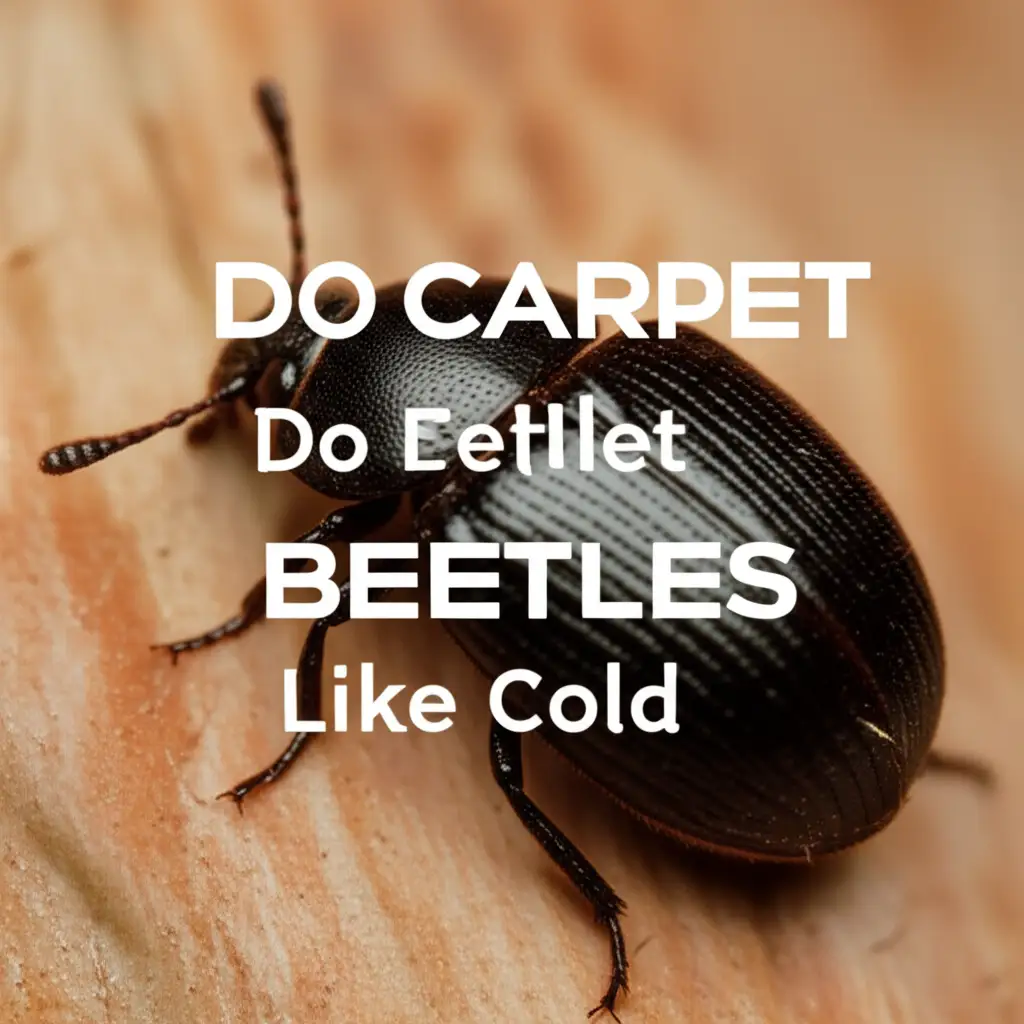· Liora Benning · Pest Control · 13 min read
How To Prevent From Bed Bugs

Stop Bed Bugs: Your Guide to Prevention
Have you ever woken up with tiny, itchy bites and wondered what caused them? Bed bugs are a common household pest, and they are incredibly good at hiding. Stopping them before they settle in is always the best plan. I know the thought of these tiny creatures can make anyone feel uneasy.
Preventing bed bugs in your home or while traveling saves you a lot of trouble. This guide will walk you through practical steps to keep your living space safe. We will cover how to spot them, smart travel habits, and effective home maintenance routines. Get ready to learn how to keep your home a bed bug-free zone.
Takeaway
- Regularly inspect your home and belongings for bed bug signs.
- Protect your mattress and box spring with specialized covers.
- Handle laundry carefully, using high heat to kill any bugs.
- Exercise caution when traveling, checking hotel rooms and luggage.
- Reduce clutter to eliminate bed bug hiding spots.
To prevent bed bugs, regularly inspect your living spaces, especially beds and furniture. Use protective encasements on mattresses and wash bedding in hot water. Be vigilant when traveling, checking accommodations and unpacking carefully to avoid bringing pests home.
Understanding Bed Bugs and Their Habits
Bed bugs are small, reddish-brown insects that feed on the blood of humans and animals. They are nocturnal, meaning they are most active at night. These pests are excellent hiders, making them hard to spot during the day. I find their ability to squeeze into tiny cracks quite remarkable, and also very frustrating.
They typically live close to where people sleep or rest. This includes mattresses, box springs, bed frames, and headboards. You might also find them in cracks in walls, behind wallpaper, or in electrical outlets. They do not discriminate; a clean home can get bed bugs just as easily as a cluttered one. Knowing their habits helps you know where to look.
Bed bugs are tough. They can survive for several months without feeding. This resilience means they can wait a long time for a host. Their eggs are also very small and sticky, often laid in crevices. This makes thorough inspection and treatment essential once they are present. You might wonder, how long does it take for bed bugs to die? Their survival time varies greatly depending on temperature and food availability. This makes prevention even more important.
They spread by hitchhiking on luggage, clothing, furniture, and other items. This is why vigilance when traveling or bringing second-hand items home is critical. Understanding these basic facts about bed bugs prepares you for effective prevention. It helps you recognize the risks and take proactive steps.
Proactive Home Inspection and Vigilance
Regular inspection is your first line of defense against bed bugs. You must train your eyes to spot the subtle signs they leave behind. I make it a point to check certain areas of my home regularly. This helps me catch any potential issues early.
Start with your sleeping area. Remove all bedding and examine the mattress seams, tufts, and folds. Pay close attention to the piping around the edges. Look for small, reddish-brown spots, which are bed bug fecal stains. You might also see tiny, pale yellow eggs or shed skins. These signs tell a clear story.
Inspect the box spring, bed frame, and headboard next. Use a flashlight for better visibility. Check cracks, crevices, and joints in the bed frame. Lift the box spring and examine the underside. Bed bugs often hide in these dark, undisturbed places. They prefer wood and fabric surfaces.
Expand your inspection to nearby furniture. Check nightstands, dressers, and chairs. Look inside drawers and along the edges. Don’t forget to examine baseboards and wall outlets near your bed. These are common hiding spots for these nocturnal invaders. Knowing their typical bite pattern, like if do bed bugs bite in threes, can also alert you to their presence. If you notice strange bites, it might be time for a thorough check.
Daily Routine Checks
A quick daily check can prevent a small problem from growing. When you make your bed, take a moment to glance at the mattress seams. Look for any new spots or tiny insects. This simple habit adds minimal time to your routine but provides significant peace of mind. It becomes second nature after a while.
When Returning Home
After any trip, especially if you stayed in a hotel, inspect your luggage. Do this before bringing your bags into your bedroom. Unpack your clothes directly into the washing machine. Wash them on a hot cycle immediately, if possible. This simple step can stop hitchhiking bed bugs in their tracks. It is a critical part of preventing an infestation.
Protecting Your Home from Infestation
Once you know what to look for, you can take specific steps to protect your home. Physical barriers and hygiene are key. I have found these measures to be incredibly effective in maintaining a bed bug-free environment. They create an environment less hospitable for these pests.
Encasing your mattress and box spring is one of the most important preventative actions. Use high-quality, zippered encasements specifically designed for bed bugs. These covers trap any existing bed bugs inside, causing them to die. They also prevent new bed bugs from infesting your mattress. Ensure the encasement remains sealed and tear-free. This barrier is a crucial line of defense for your sleeping area.
Regular cleaning also helps a great deal. Vacuum your carpets, rugs, and upholstered furniture frequently. Pay extra attention to cracks and crevices around your bed and along baseboards. Empty the vacuum cleaner bag immediately after use. Seal the bag in a plastic bag and dispose of it outdoors. This prevents any trapped bugs from escaping back into your home.
Laundry care is another vital component. Wash all bedding, including sheets, pillowcases, and blankets, regularly. Use the hottest water setting suitable for the fabric. After washing, dry items on the highest heat setting for at least 30 minutes. High heat kills bed bugs and their eggs. This method is effective for clothing, towels, and even items like can I put cat bed in washing machine if it’s washable. Heat is a bed bug’s worst enemy.
Mattress and Box Spring Protection
Consider putting interceptor devices under the legs of your bed. These small dishes fit under each bed leg. They have a rough outer surface, allowing bed bugs to climb in. The inner surface is smooth, preventing them from climbing out. These devices can trap bed bugs trying to get onto or off your bed. They also serve as an early warning system.
Laundry and Heat Treatment
Be mindful of items that cannot be washed or dried on high heat. For these, consider professional heat treatment or placing them in a sealed bag with a desiccant. Alternatively, you can put items in a freezer at 0°F (-18°C) for at least four days. This extreme cold also kills bed bugs. Always follow garment care instructions when choosing a method.
Smart Travel Habits to Avoid Bringing Bed Bugs Home
Travel is a major way bed bugs spread. They are notorious hitchhikers. I always follow specific steps when I travel to ensure I don’t bring any unwanted guests back with me. A few minutes of caution can prevent months of headaches.
Before you even unpack, inspect your hotel room. Pull back the sheets and check the mattress seams, headboard, and bedside furniture. Look for the same signs you would at home: small reddish-brown stains, shed skins, or live bugs. Use a flashlight for a thorough check. If you find anything, ask for a new room that is not adjacent to the suspicious one.
Do not place your luggage on the floor or bed in a hotel room. Instead, store your suitcase on a luggage rack, a dresser, or in the bathroom. Bed bugs prefer to be close to where people sleep, so keeping your bags elevated and away from the bed reduces the risk. Hard-sided luggage is also generally harder for bed bugs to cling to than soft luggage.
When you return home, unpack your suitcase outside or in a laundry room away from your bedroom. Immediately put all clothes, even unworn ones, into the washing machine. Wash them on the hottest possible setting, then dry on high heat. This will kill any bed bugs or eggs that may have hitched a ride. Do not bring the suitcase into your bedroom until it has been thoroughly inspected.
You can also vacuum your suitcase thoroughly. Pay attention to zippers, seams, and pockets. After vacuuming, dispose of the vacuum bag immediately outside in a sealed trash bag. For items that cannot be washed or dried, consider sealing them in a plastic bag for several weeks. This starves any bed bugs inside. These habits greatly reduce your risk.
Maintaining a Clean and Organized Living Space
A clean and clutter-free home significantly reduces bed bug hiding spots. While cleanliness alone cannot prevent an infestation, it makes detection and elimination much easier. I find that a tidy home is a happier home, and it also makes pest control simpler.
Decluttering is a major step. Remove piles of old newspapers, magazines, and clothes from your floor. These items provide ideal hiding places for bed bugs. The less clutter you have, the fewer places bugs can hide. This applies to storage areas, closets, and even under the bed. A minimalist approach helps in this regard.
Seal cracks and crevices in your walls, floors, and baseboards. Bed bugs can easily hide in these small openings. Use caulk to seal these potential entry points. This not only removes hiding spots but also prevents bugs from moving between rooms or apartments. It creates a more secure environment.
Regular vacuuming is more than just surface cleaning. Use a vacuum with a strong suction and attachments to reach into corners, along baseboards, and under furniture. Vacuum your carpets, rugs, and even hard floors where dust and debris accumulate. Remember to empty the vacuum cleaner bag outside immediately after each use. While not directly linked to preventing bed bugs, maintaining overall cleanliness, such as how to clean the refrigerator, contributes to a healthier living environment.
Think about your furniture. If you bring second-hand furniture into your home, inspect it very carefully. Bed bugs can easily come in on used items. If possible, clean upholstered furniture with a steam cleaner before bringing it inside. The high heat from steam can kill bugs and eggs. Do this thoroughly to ensure no hidden pests.
Even areas like ceilings should be clean to prevent dust and debris from accumulating, which can attract other pests or create a generally unkempt environment. Learning how to clean a ceiling is part of a comprehensive home maintenance strategy. A well-maintained home is less appealing to any pest, including bed bugs.
When Professional Help is Needed
Despite your best efforts, bed bugs can still find their way into your home. It happens to many people. If you suspect an infestation, knowing when to call a professional is important. DIY methods often fall short because bed bugs are so resilient.
Small infestations might be manageable with diligent DIY efforts. However, bed bugs reproduce quickly. A few bugs can turn into a large problem in a short amount of time. If you continue to find bites or spot live bugs after your initial attempts at control, it’s time to seek expert help. Professionals have specialized tools and knowledge.
Pest control professionals use a variety of methods. These can include chemical treatments, heat treatments, or a combination. Heat treatments are very effective because bed bugs cannot survive high temperatures. Chemical treatments often require multiple visits to ensure all life stages are eradicated. They know exactly where to apply treatments for maximum impact.
Do not rely solely on over-the-counter sprays. While some products may kill individual bugs on contact, they rarely eliminate an entire infestation. Products like “Home Defence” are generally designed for broader pest control, and you might wonder will Home Defence kill bed bugs? For bed bugs, specialized products and application methods are usually necessary for full eradication. These products often lack the residual effect needed for bed bug control.
Calling a professional early can save you money and stress in the long run. They can accurately identify the extent of the infestation. They also ensure all hiding spots are addressed. A professional treatment plan is often the most effective way to eliminate bed bugs for good. Do not hesitate to call them if you feel overwhelmed.
FAQ Section
Q1: Can I prevent bed bugs without chemicals?
Yes, you can prevent bed bugs without chemicals by using physical barriers and heat. Encase your mattress and box spring with bed bug-proof covers. Regularly wash bedding in hot water and dry on high heat. Also, use interceptor traps under bed legs. These methods create a hostile environment for bed bugs.
Q2: How often should I check for bed bugs?
You should check for bed bugs regularly, especially if you travel often or bring second-hand items into your home. A quick visual check of your bed seams once a week is a good habit. After returning from a trip, inspect luggage and belongings thoroughly before bringing them inside.
Q3: Do bed bug encasements really work?
Yes, bed bug encasements are highly effective. They trap any bed bugs already on your mattress or box spring, starving them over time. They also prevent new bed bugs from infesting your bed. Ensure the encasement is tear-proof and remains properly sealed around all sides.
Q4: Can bed bugs travel on clothes?
Yes, bed bugs can easily travel on clothes, luggage, and other personal items. This is a common way they spread from one location to another. Always inspect your clothing and bags after visiting public places or staying overnight somewhere. Washing clothes in hot water immediately is a good preventive step.
Q5: What are the first signs of bed bugs?
The first signs of bed bugs often include small, itchy red bites on your skin, often in a line or cluster. You might also notice tiny reddish-brown spots (fecal stains) on your bedding or mattress. Small, pale yellow eggs or shed skins along mattress seams are also clear indicators.
Conclusion
Preventing bed bugs can seem like a daunting task, but it is achievable. By staying vigilant and taking proactive steps, you can keep your home safe. We have discussed how to inspect your living spaces, use smart travel habits, and maintain a clean environment. Each of these steps plays a vital role in keeping these pests away.
Remember, prevention is always easier and less costly than treating an infestation. Regularly inspect your bed, use protective covers, and handle your laundry with care. When you travel, take precautions to avoid bringing these hitchhikers home. A little effort goes a long way in ensuring your peace of mind. Taking these steps is how to prevent from bed bugs effectively. Start applying these tips today and enjoy a bed bug-free home!





